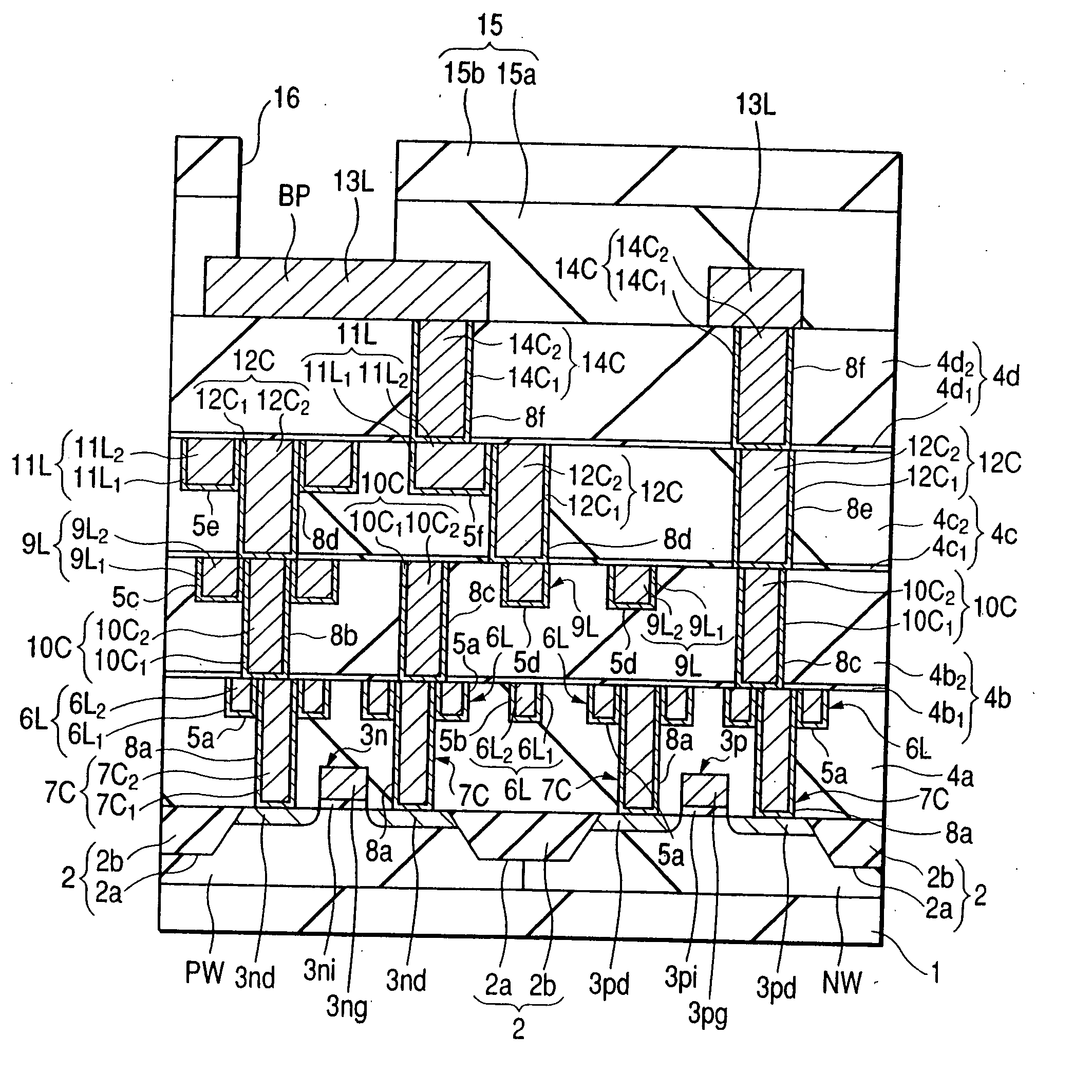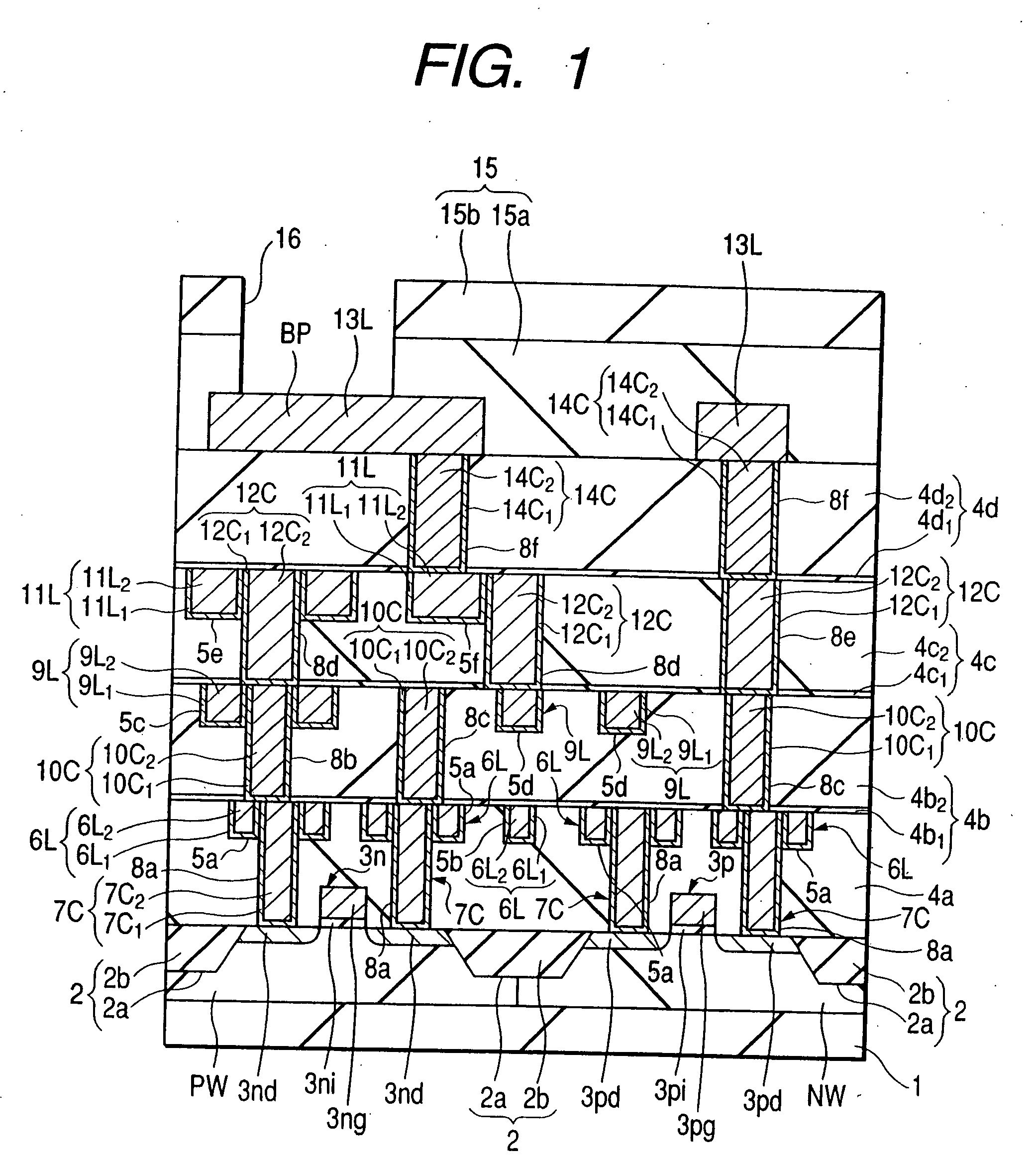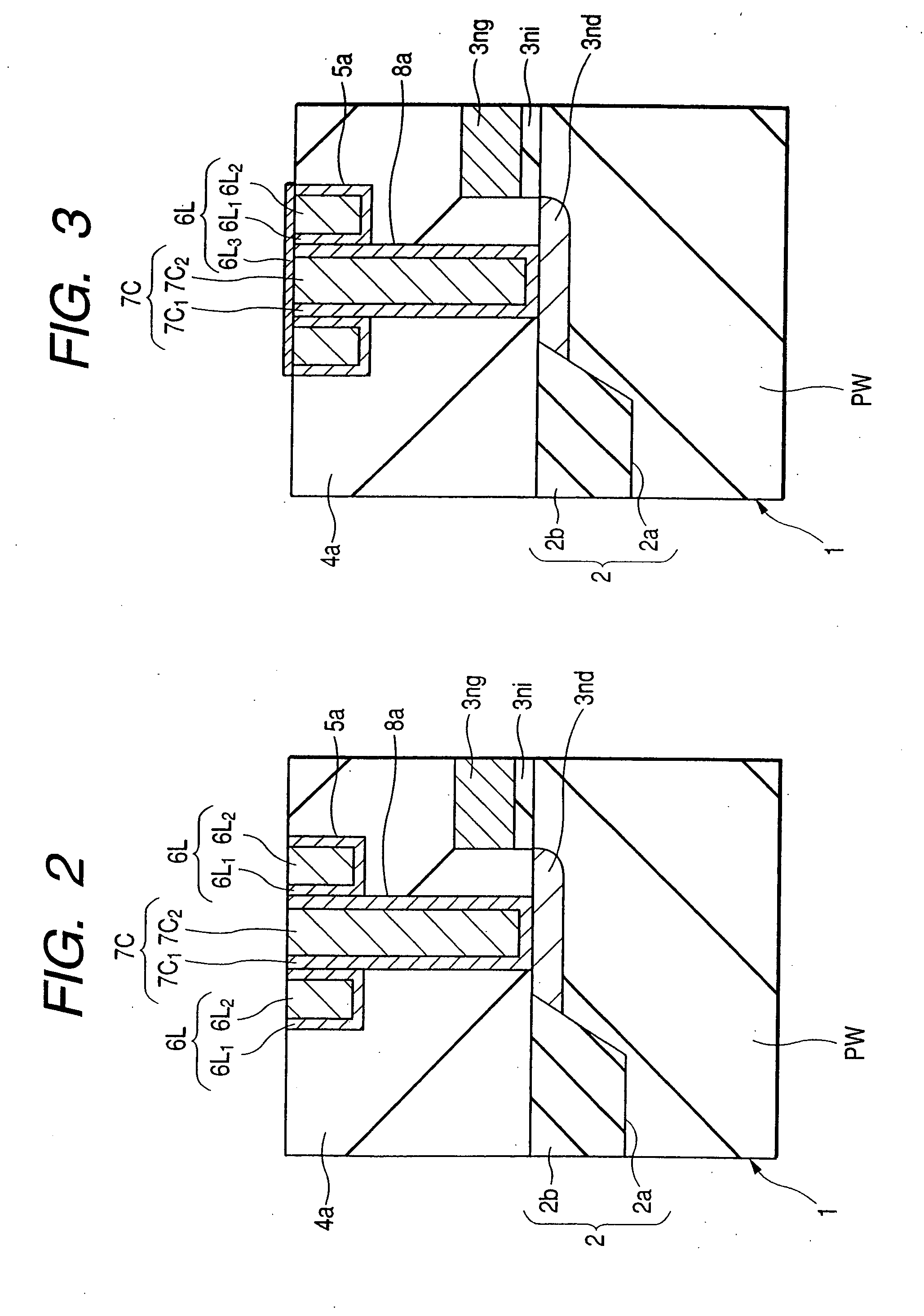Fabrication process for a semiconductor integrated circuit device
a technology of integrated circuit device and fabrication process, which is applied in the direction of semiconductor devices, semiconductor/solid-state device details, electrical apparatus, etc., can solve the problems of not fully establishing the total image including the structure and fabrication, becoming difficult to bury the connecting hole, and difficult to bury copper in the connecting hole by the sputtering method, etc., to improve the reliability of the buried interconnection
- Summary
- Abstract
- Description
- Claims
- Application Information
AI Technical Summary
Benefits of technology
Problems solved by technology
Method used
Image
Examples
first embodiment
[0097]FIG. 1 is a fragmentary cross-sectional view of the semiconductor integrated circuit according to the first embodiment of the present invention; FIG. 2 is a fragmentary cross-sectional view illustrating the first-layer interconnection of the semiconductor integrated circuit device of FIG. 1; FIGS. 3 through 5 are cross-sectional views illustrating a modification of the interconnection structure of FIG. 2; FIG. 6 is a fragmentary cross-sectional view illustrating the second-layer interconnection of the semiconductor integrated circuit device of FIG. 1; FIG. 7 is a fragmentary cross-sectional view illustrating a modification of the connection between interconnection layers of the semiconductor integrated circuit device of FIG. 1; FIGS. 8 through 12 are fragmentary cross-sectional views of the semiconductor integrated circuit device of FIG. 1 during its fabrication process; and FIGS. 13 through 18 are fragmentary, partially-cutaway, perspective view of the semiconductor integrate...
second embodiment
[0189]FIGS. 19 through 23 are fragmentary cross-sectional views of the semiconductor integrated circuit device according to the second embodiment of the present invention during the fabrication process and FIG. 24 is a fragmentary cross-sectional view illustrating the semiconductor integrated circuit device.
[0190] This second embodiment is different from the first embodiment in the structure of a connecting conductor portion and its forming process.
[0191] As illustrated in FIG. 19, a photoresist pattern 17b is formed on the upper surface of the interlayer insulating film 4a for the formation of an interconnection groove. Then, the interlayer insulating film 4a is etched with the photoresist pattern 17b as an etching mask, whereby an interconnection groove 5a is formed in the upper part of the interlayer insulating film 4a.
[0192] After the removal of the photoresist pattern 17b, a photoresist pattern 17c is formed, as illustrated in FIG. 20, over the interlayer insulating film 4a ...
third embodiment
[0201]FIGS. 25 through 28 and FIGS. 29 through 32 are fragmentary cross-sectional views of the semiconductor integrated circuit device according to the third embodiment of the present invention during the fabrication process; and FIG. 33 is a fragmentary cross-sectional view of the semiconductor integrated circuit device.
[0202]FIG. 25 illustrates the semiconductor integrated circuit device during the fabrication process. In the interlayer insulating film 4a, the interconnection groove 5a and connecting hole 8a are formed by the method as described in the second embodiment.
[0203] In the third embodiment, the connecting conductor portion 7C made of, for example, tungsten is formed in the connecting hole 8a by the selective CVD method as illustrated in FIG. 26. In this third embodiment, the film formation is carried out to such an extent as the upper part of the connecting conductor portion 7C protrudes outside the interconnection groove 5a. The material of the connecting conductor p...
PUM
| Property | Measurement | Unit |
|---|---|---|
| depth | aaaaa | aaaaa |
| depth | aaaaa | aaaaa |
| aspect ratio | aaaaa | aaaaa |
Abstract
Description
Claims
Application Information
 Login to View More
Login to View More - R&D
- Intellectual Property
- Life Sciences
- Materials
- Tech Scout
- Unparalleled Data Quality
- Higher Quality Content
- 60% Fewer Hallucinations
Browse by: Latest US Patents, China's latest patents, Technical Efficacy Thesaurus, Application Domain, Technology Topic, Popular Technical Reports.
© 2025 PatSnap. All rights reserved.Legal|Privacy policy|Modern Slavery Act Transparency Statement|Sitemap|About US| Contact US: help@patsnap.com



